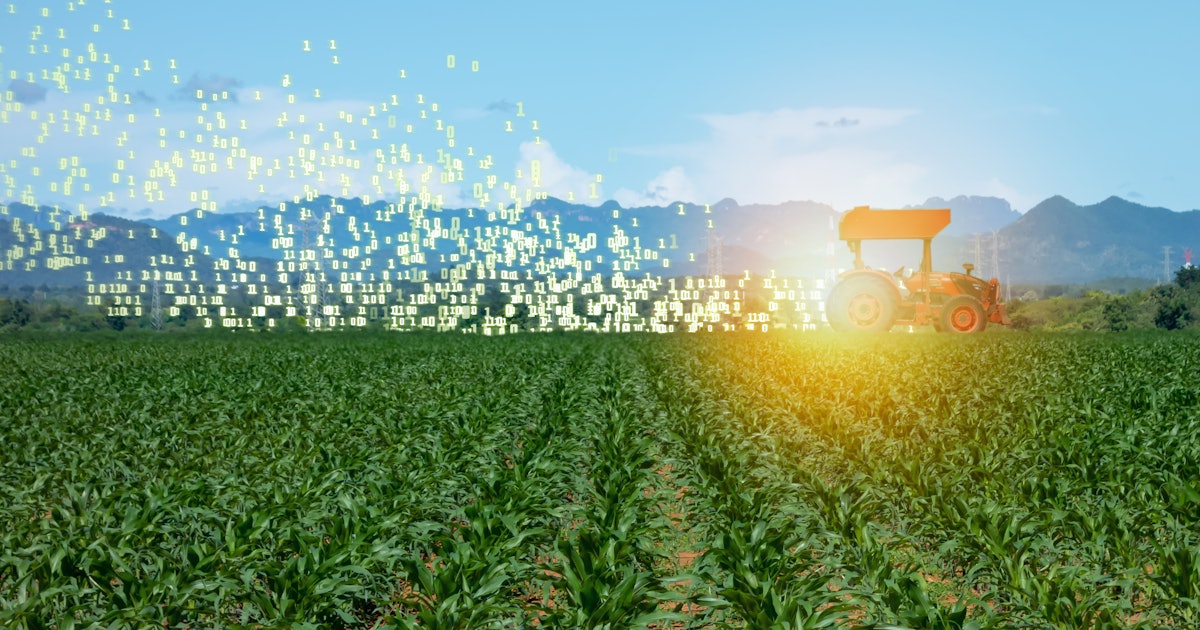Impact of agriculture on the planet it is huge and unforgiving. Approximately 40 percent of the Earth’s suitable land surface is used for cultivation and grazing. The number of domestic animals far exceeds the remaining wild populations. Each day, more primary forest falls against a tide of plantations and pastures, and each year an area as large as the United Kingdom is lost. If humanity wants to tackle climate change, we must reimagine agriculture.
Covid-19 also exposed deficiencies in current food systems. Agricultural scientists have known for decades that agricultural labor can be exploitative and difficult, so it shouldn’t be surprising to anyone that farm owners have trouble importing labor to keep farms running while struggling to ensure food workers stay. virus free.
Likewise, “just enough, just in time” food supply chains are efficient, but offer little redundancy. And pushing agricultural land into the forest connects humans with reservoirs of viruses that – when they enter the human population – prove devastating.
To meet these challenges, new technologies promise a greener approach to food production and focus on more plant-based, year-round, local and intensive production. Done right, three technologies – vertical, cellular and precision agriculture – can redo the relationship between land and food.
3. Farm in a box
Vertical farming – the practice of growing food in stacked trays – is not new; innovators have been growing indoor crops since Roman times. The novelty is the efficiency of LED lighting and advanced robotics, which allow vertical farms to produce 20 times more food with the same footprint than is possible in the field.
Currently, most vertical farms produce only vegetables, such as lettuce, herbs and microgreens, because they are fast and profitable, but within five years many more crops will be possible, as the cost of lighting continues to fall and technology develops.
The controlled environments of vertical farms reduce the use of pesticides and herbicides, can be carbon neutral and recycle water. For cold and hot climates, where the production of tender crops is difficult or impossible, vertical farming promises the end of expensive and environmentally intensive imports, such as berries, small fruits and avocados from regions like California.
Cellular agriculture, or the science of producing animal products without animals, heralds an even greater change. In 2020 alone, hundreds of millions of dollars entered the sector and, in recent months, the first products reached the market.
This includes Brave Robot’s “ice cream” that doesn’t involve cows and the limited launch of Eat Just’s “chicken” that never went cackling.
Precision agriculture is another major frontier. Soon, autonomous tractors will use the data to plant the right seed in the right place and provide each plant with the exact amount of fertilizer, reducing energy, pollution and waste.
Together, vertical, cellular and precision agriculture should allow us the ability to produce more food with less land and less inputs. Ideally, we will be able to produce any crop, anywhere, at any time of the year, eliminating the need for long, vulnerable and energy-consuming supply chains.
2. Is 2.0 agriculture ready?
Of course, these technologies are not a panacea – no technology is. On the one hand, although these technologies are maturing rapidly, they are not quite ready for conventional deployment. Many remain too expensive for small and medium-sized farms and can lead to farm consolidation.
Some consumers and food theorists are cautious, wondering why we can’t produce our food the way our great-grandparents did. Critics of these agricultural technologies are calling for agroecological or regenerative agriculture that achieves sustainability through diversified, small-scale farms that feed local consumers. Regenerative agriculture it is very promising, but it is not clear whether it will have scale.
While these are serious considerations, there is no single approach to food security. For example, small-scale alternative farms with mixed crops also suffer from a shortage of labor and typically produce expensive food that is beyond the means of low-income consumers. But it doesn’t have to be an “or / or” situation. There are advantages and disadvantages to all approaches and we cannot achieve our climate and food security objectives without also embracing agricultural technology.
1. Hopeful future for agriculture
By taking the best aspects of alternative agriculture (namely the commitment to sustainability and nutrition), the best aspects of conventional agriculture (economic efficiency and scalability) and new technologies like those described above, the world can embark on an agricultural revolution that – when combined with progressive policies around work, nutrition, animal welfare and the environment – will produce abundant food while reducing the agricultural footprint on the planet.
This new approach to agriculture, a “closed circuit revolution”, it is already flourishing in fields (and laboratories) of advanced greenhouses in the Netherlands and fish farms in Singapore to Silicon Valley cell agriculture companies.
Closed-loop farms use few pesticides, are efficient in terms of land and energy and recycle water. They can enable local production throughout the year, reduce repetitive manual labor, improve environmental results and animal welfare. If these facilities are combined with good policy, we should see land that is not necessary for agriculture to be returned to nature as parks or wildlife refuges.
Today’s world was shaped by an agricultural revolution that started 10,000 years ago. This next revolution will be equally transformative. Covid-19 may have put the problems with our food system on the front page, but the long-term perspective for this old and vital industry is, ultimately, good news.
This article was originally published at The conversation in Lenore Newman and Evan Fraser at UCL. Read the original article here.
